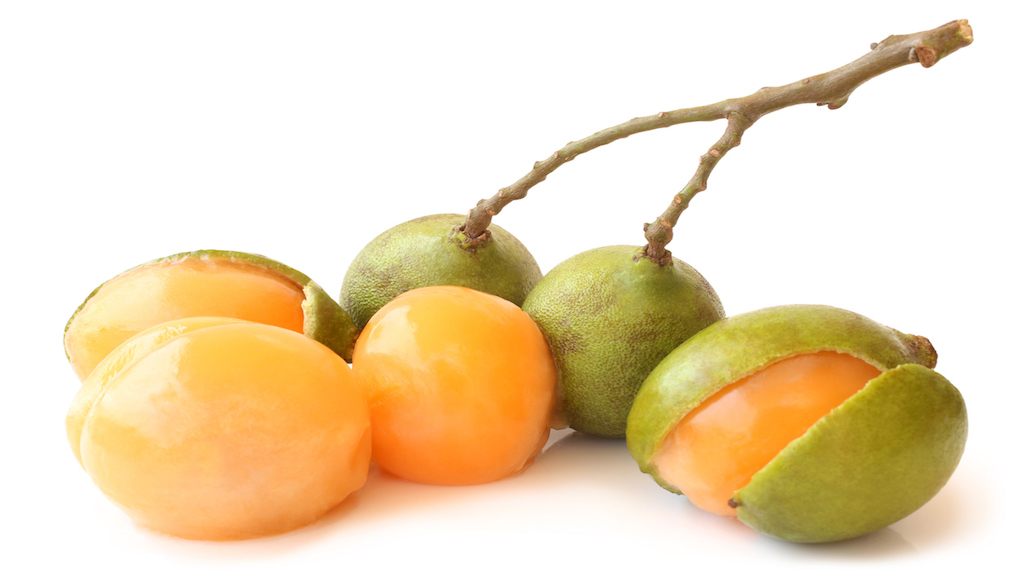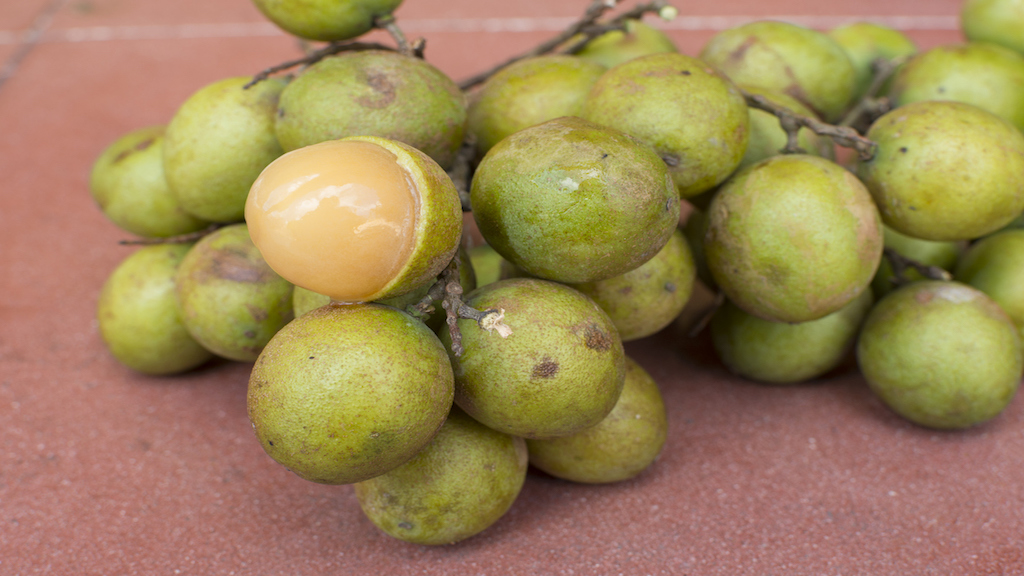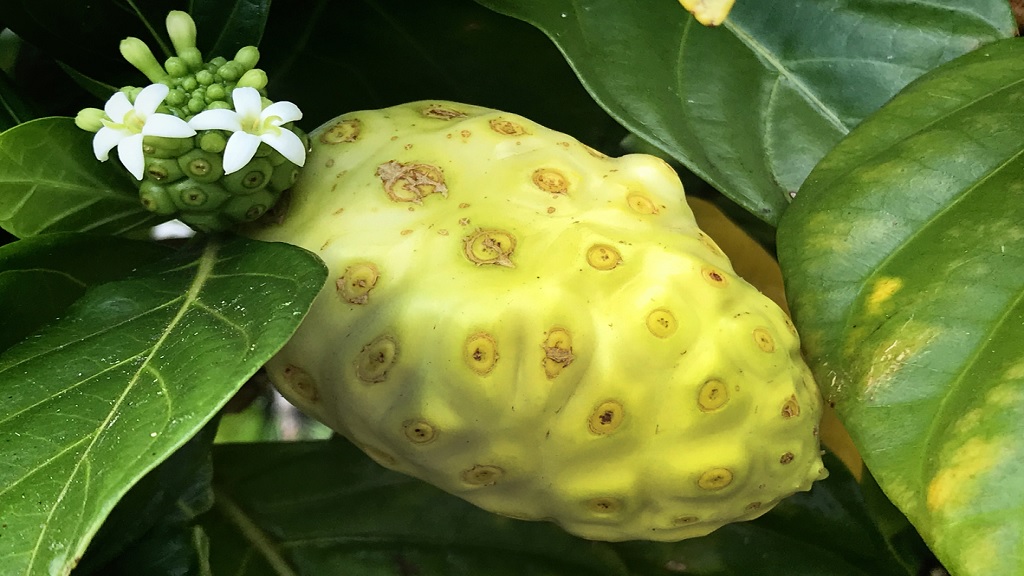

Guinep is a popular fruit in the Caribbean.
Green in colour, guinep is a tropical fruit that grows in bunches on a Mamoncillo tree. The outer skin of the fruit is peeled away, making way to a jelly-like fruit inside that has a large pit. Guinep has a big hard seed leaving only a little layer of the pulp.
The fruit has different names depending on the region. Among them are skinip, honey berry, mammon, mamoncillo, quenepa, and Spanish lime. It is a seasonal exotic fruit which is most abundant in the summer.
Naturalized in the tropical and subtropical areas of Southern America, Guinep has fast grown to different parts of the world, and at the moment is available even in supermarkets and grocery stores.
The delicious fruit is low in fat and calories, making it one of the best nutritional fruits available in the market today. According to Proactive Health, half a cup of guinep has a healthy composition: 1g Protein, 13.5-19.2g carbohydrates, 0.07-2.60g fibre, 15g calcium and 23.9 mg phosphorus.

Guinep grows best in warm environments as it is affected by freezing temperatures through frost damages.
The leaves of guinep trees can be boiled and taken as tea, which is good for treating intestinal problems.
Guinep fruit holds a place at the hall of fame of exotic fruits. It comes with surprising health benefits such as:
Helps lower blood pressure due to the presence of amino acids (tryptophan and lysine)
The presence of Vitamin A and C in the guinep fruit is essential for boosting the immune system
Vitamin A also prevents the formation of Urinary stones
The fruit is a source of dietary fiber and ferulic acid (found in the pulp tissues) which reduces the colon transit time hence it’s great in treating constipation and lowering cholesterol in the body
Guinep has Calcium for strengthening bones and teeth
Antioxidants (phenolic compounds) preventing cardiovascular disease and strokes
Phosphorus, digestion and regulating hormones
The presence of tryptophan makes the fruit a “sleep booster” as it helps in producing serotonin, the hormone that can affect sleep in the humans. This makes Guinep great for your mental health as serotonin is also responsible for improving your mood
The fruit can be roasted then mixed with honey to treat digestive problems, such as stomach ache and diarrhea, due to its strong antioxidants properties
- Guinep has been used for some time by patients to treat herpes. This is due to the presence of amino acid called L-lysine which is known to inhibit the virus.
The easiest way to eat your guinep is to bite through the fruit skin until you get to the pulp. You put the entire fruit into your mouth and you suck the pulp on the pit until you get to the seed.
You can boil the seed and eat it, or get it roasted and crushed to use in baking bread and other foods. You can also make guinep juice, which is made from the jelly and tastes like a sweet lemonade.
Many people prefer to eat the fruit with salt, lime, powder and chili to spice it up.
Make sure that you eat only the ripe guinep, as the raw ones contain a lot of toxins. The seed of the raw guinep contains cyanogenic glycoside which changes into the poisonous hydrogen cyanide when consumed. Avoid giving the guinep to children, not even half the fruit, as its big seed size is considered to be a choking hazard.
Making guinep juice is not much of a task, you do not require any special skills or special know how. Just follow this simple direction for your perfect juice.
This is the process, according to Chef Noel Cunningham;
Among the ingredients you need to have are guinep, ginger, water, lime, and sugar.
Directions:
Peel away the guinep skin to get the berry
Place the berry in a medium container of hot boiled drinking water for 20 minutes or till cold
Using a clean hand, get your hands in the bowl holding the seeds and rub the pulp off the seeds
Add a little lime to the mixture for a sweet taste
Guinep has a strong stain that is hard to remove from clothes in case of spillage. In order to avoid ruining your clothes, you need to get rid of the stain as soon as possible.
Removing the guinep stain can be as easy as consistently pressing an ice cube on the surface using a paper towel or a rag until the stain lifts.
Some of this information was taken from https://trendiko.com/guinep-







 0°C
0°C















![[iStock:Kar-Tr]](https://loopnewslive.blob.core.windows.net/liveimage/sites/default/files/styles/popular_big/public/2022-07/9260a4829dedbb2a4b04119268d18754friends-friendship-istock.jpg)



 Facebook
Facebook
 Twitter
Twitter
 Instagram
Instagram